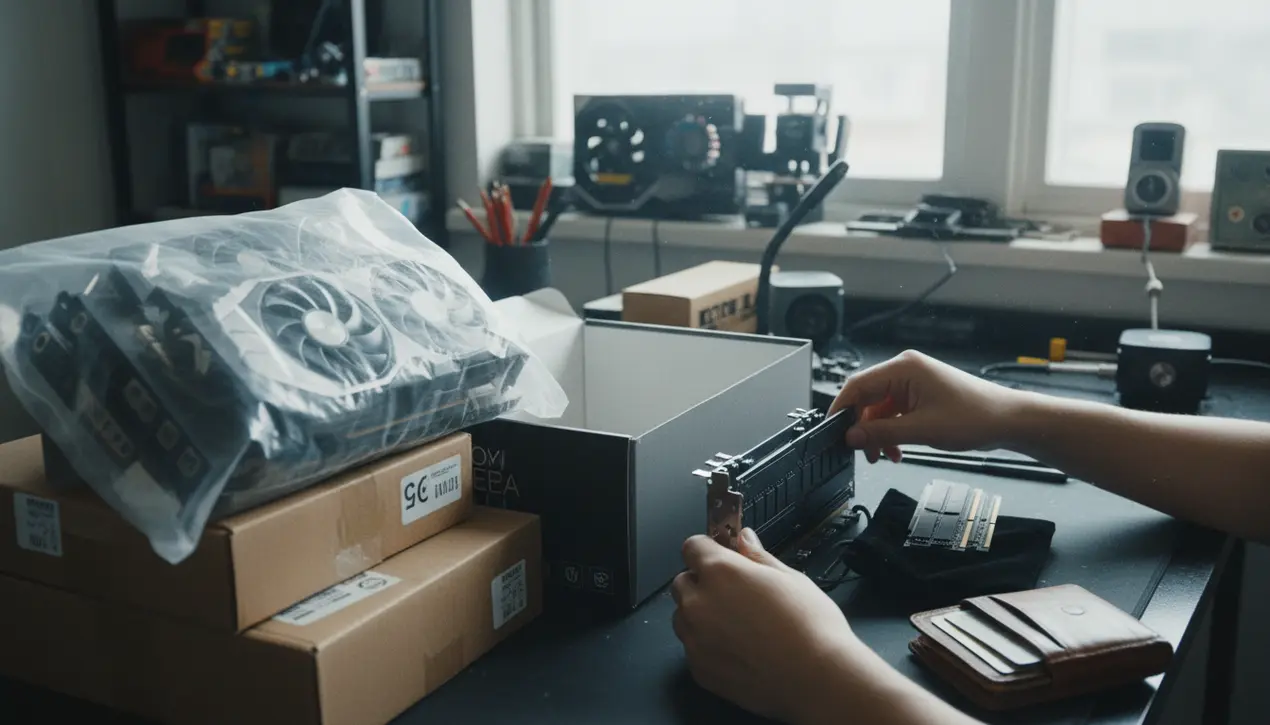
AIchips & hardwareNVIDIA GPUs
GPU Prices Fall as RAM Costs Skyrocket
OL
Olivia Scott
4 hours ago7 min read2 comments
The tectonic plates of the tech sector are shifting in a starkly divergent dance, as a precipitous decline in Graphics Processing Unit (GPU) prices coincides with a vertiginous spike in the cost of Dynamic Random-Access Memory (DRAM). This isn't merely a market correction; it's a fundamental realignment of the supply chain that reveals the complex, often contradictory forces governing the hardware we depend on for everything from gaming to artificial intelligence.For consumers, the immediate sensation is whiplash. On one hand, the GPU market, which was once a speculator's paradise with cards selling for multiples of their MSRP due to the crypto-mining frenzy and pandemic-induced shortages, is finally normalizing.Shelves are stocking up, and the secondary market is flooded with used mining cards, creating a buyer's market for the first time in years. This glut is a direct consequence of the crypto winter and a cooling in consumer electronics demand, forcing manufacturers like NVIDIA and AMD to clear inventory ahead of next-generation launches.It feels like a long-awaited victory for gamers and creators. Yet, this relief is brutally undercut by the RAM situation.The price of DDR5 kits, in particular, has exploded, with some models now costing over three times what they did a mere quarter ago. This isn't a simple case of inflation; it's a classic supply-side squeeze.Major memory manufacturers like Samsung and SK Hynix, having endured a prolonged period of oversupply and weak prices, have aggressively curtailed production. They are executing a deliberate strategy to restore profitability, a move straight out of the playbook of a consolidated oligopoly.Furthermore, the industry's pivot towards producing high-bandwidth memory (HBM) for AI servers is cannibalizing production capacity for commodity DRAM, creating a structural shortage that won't be easily resolved. From a Wall Street perspective, this creates a fascinating dichotomy.For PC builders and OEMs, the collapsing GPU prices compress margins on finished systems, while the soaring RAM costs inflate their bill of materials. This margin pressure will inevitably be passed on to consumers or absorbed as a hit to profitability, a dynamic that will be closely watched in the next round of earnings calls.The situation echoes past commodity cycles but is amplified by the unique demands of the AI era. The broader implication is a re-prioritization of capital expenditure within the tech industry.While the cost of raw computational power (GPUs) is falling, the 'plumbing' that allows that power to function efficiently (memory) is becoming a critical bottleneck and a costly one at that. This will force system architects and data center operators to rethink their designs, potentially accelerating the adoption of new memory technologies and architectures.In the end, this isn't just a story about two component prices moving in opposite directions; it's a real-time lesson in market economics, strategic corporate maneuvering, and the unpredictable interplay between different segments of a globalized technology ecosystem. The easy gains from the GPU price crash are, for now, being wiped out by the memory market's ruthless ascent.
#GPU prices
#RAM costs
#hardware market
#price volatility
#consumer electronics
#featured
Stay Informed. Act Smarter.
Get weekly highlights, major headlines, and expert insights — then put your knowledge to work in our live prediction markets.
Related News
Comments
Loading comments...
© 2025 Outpoll Service LTD. All rights reserved.